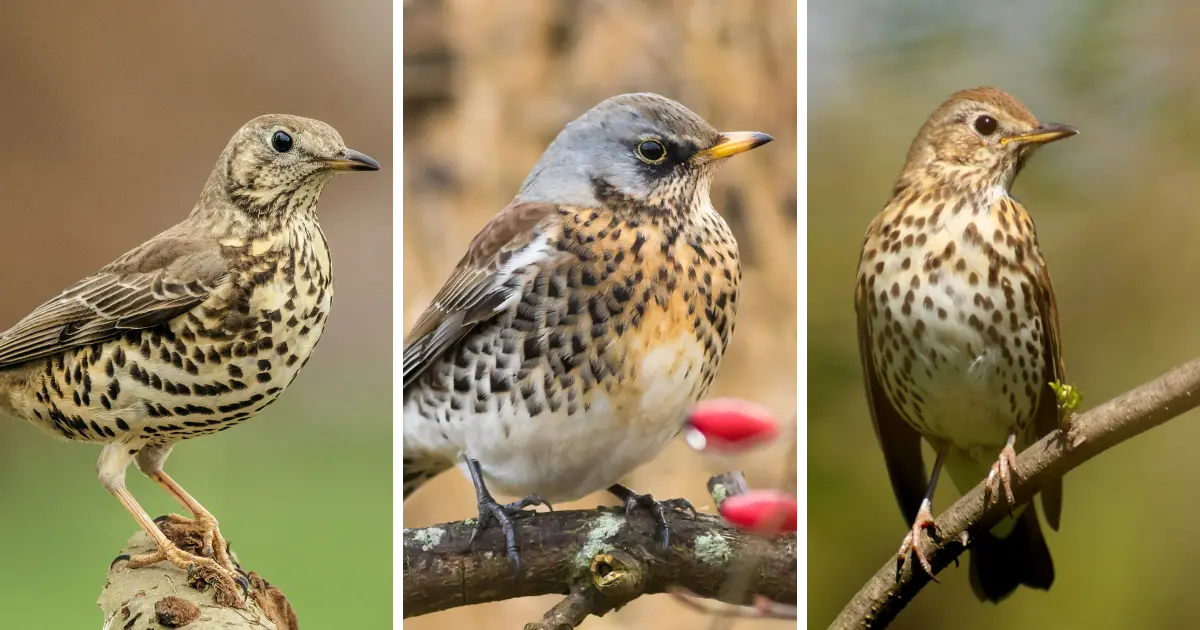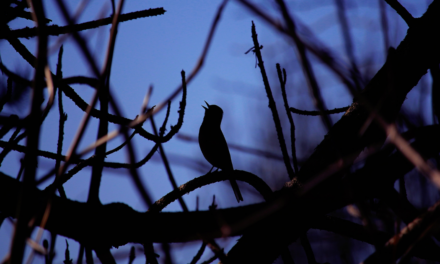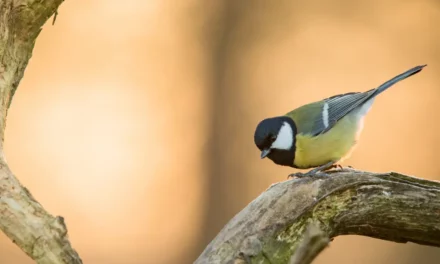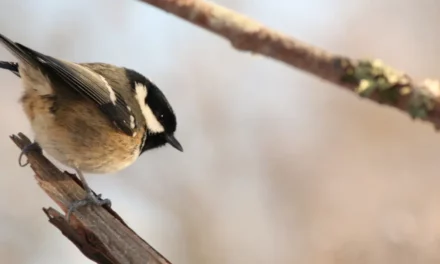Thrushes are remarkable songbirds known for their distinct and varied songs. For bird enthusiasts, learning to distinguish the songs of different thrush species is crucial for accurate identification. In this article, we explore the differences between the songs of the Mistle Thrush, the Fieldfare, and the Song Thrush. You’ll find detailed descriptions, images, and audio recordings to help you recognize these birds during your birdwatching outings.
Mistle Thrush
The Mistle Thrush emits a harsh buzzing call “gre-gre-gre” throughout the year. This sound often serves as an alarm call when the bird perceives danger.
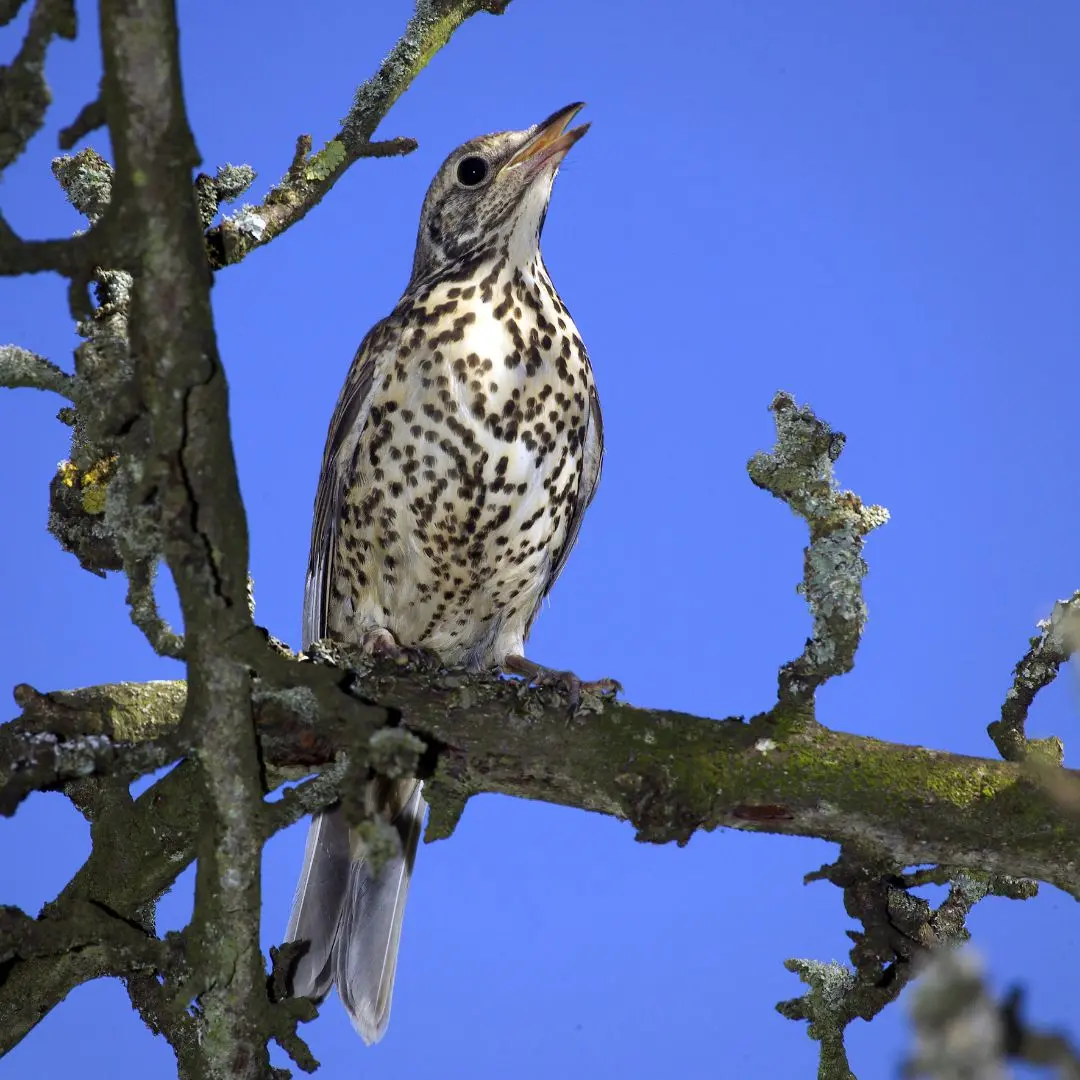
The Mistle Thrush’s song is similar to the Blackbird, but less varied. Its phrases are short and punctuated by brief silences, creating a distinctive rhythm.
The Mistle Thrush often begins singing as early as February, marking the start of its breeding season well before the arrival of spring. This bird's vocal presence is a reliable sign of winter’s end for nature lovers.
For more details, check out our guide on bird phylogeny and evolution.
Fieldfare
The Fieldfare has a repertoire of varied calls. The most common is a distinctive “tra-tra-tra”, often heard when the bird is flying or in groups.
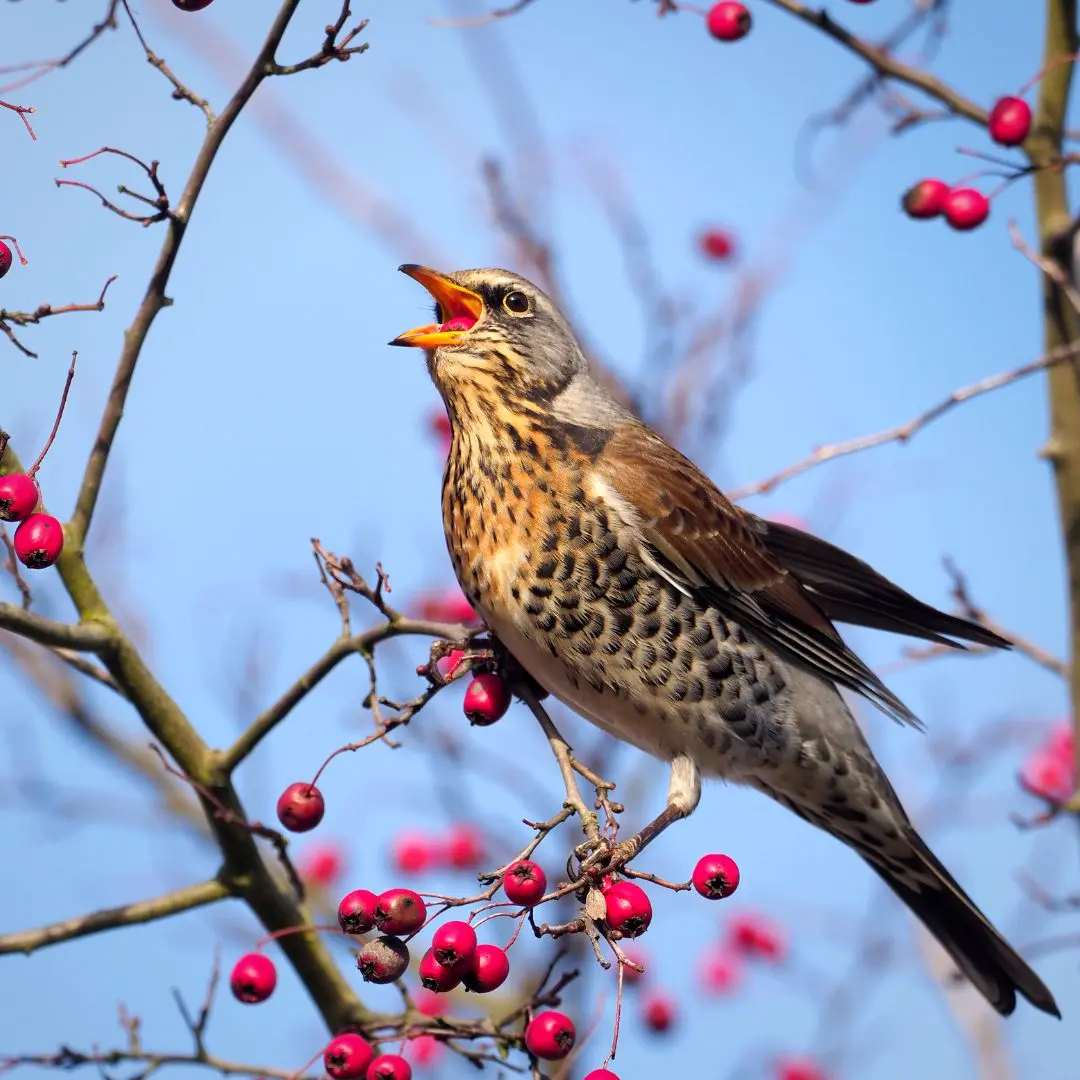
Its song is a disjointed, robotic warble with harsh, strident notes, making it quite distinctive and not very melodious. This makes it easier to identify compared to other songbirds.
Song Thrush
The Song Thrush is known for its distinctive alarm call, “zwi-zwi-zwi”, used to alert other birds to the presence of danger.
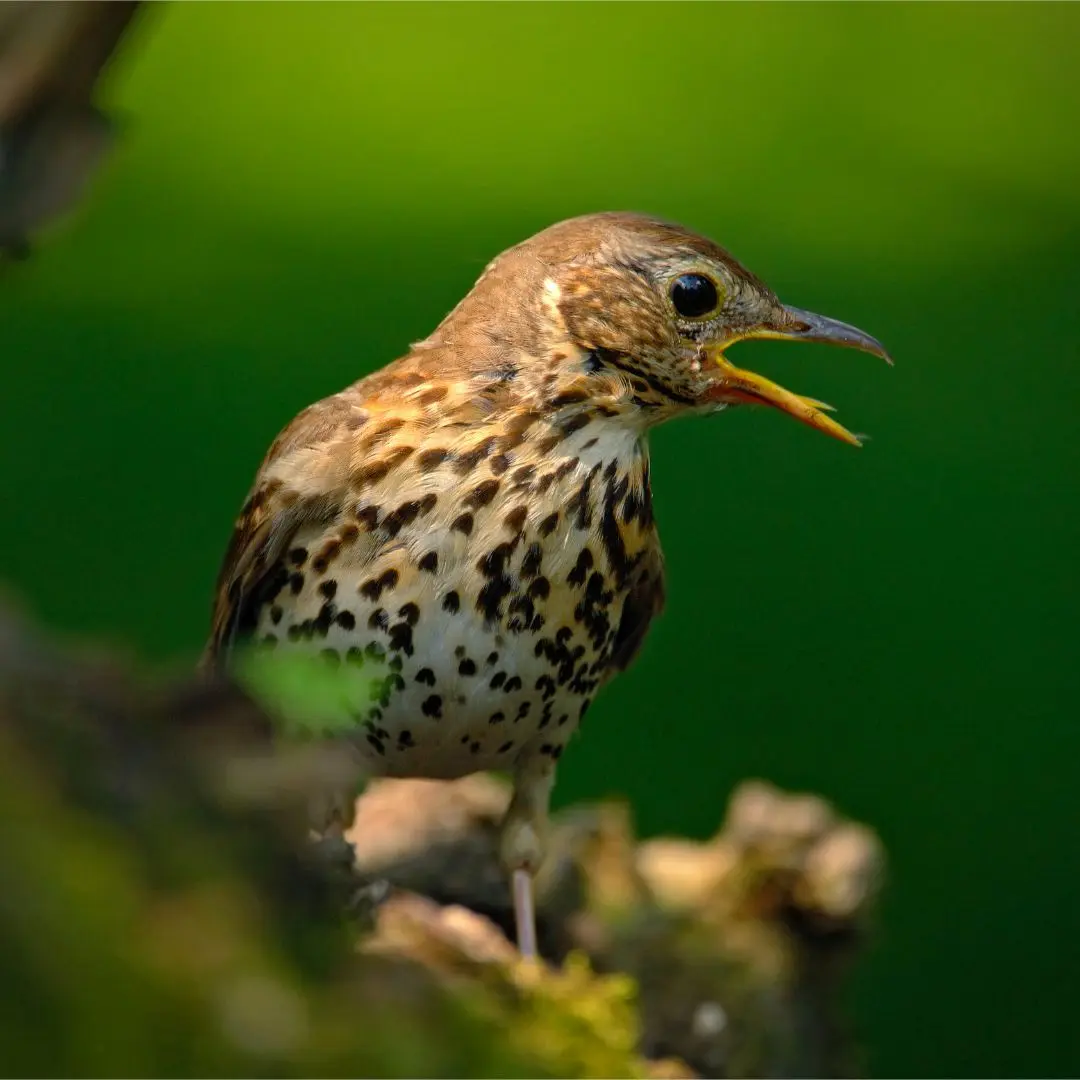
Unlike other thrushes, the Song Thrush is renowned for its melodious, loud, and energetic song. It’s a great improviser, constantly changing its tune and offering a rich diversity of sounds. Its ability to mimic other birds adds complexity to its vocal repertoire.
The Song Thrush’s song is recognized by its short, varied phrases, which it repeats 2 to 4 times with subtle variations, often including imitations of other birds. It prefers to sing perched on the tops of tall trees, where it can be both seen and heard. The Song Thrush begins singing in early March, announcing the end of winter and the approach of spring.
Listening to Thrushes
By understanding the differences between the songs of the Mistle Thrush, the Fieldfare, and the Song Thrush, you can enhance your birdwatching skills and listening abilities. Each thrush has a unique vocal style that reflects its behavior and habitat. Whether it’s the harsh call of the Mistle Thrush, the robotic warble of the Fieldfare, or the varied and melodious song of the Song Thrush, you’ll discover a new dimension of ornithology by learning to recognize these birds through their distinctive songs. Use the audio recordings and images to deepen your understanding and appreciation of these remarkable singers.
-
